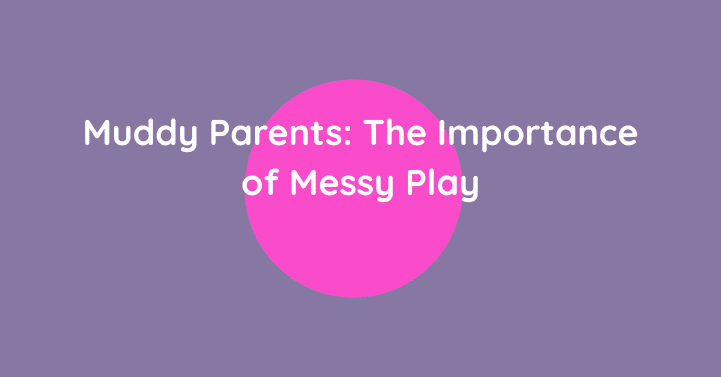Muddy Parents
The Importance of Messy Play
Why it matters — and how to enjoy it at home without stress
What Is Messy Play?
Messy play is any activity where children explore materials with their hands, senses and whole body.
It includes:
-
water
-
mud
-
sand
-
paint
-
foam
-
clay
-
dough
-
rice, pasta or lentils
-
natural objects (leaves, sticks, petals)
It’s not about making something perfect — it’s about exploring, discovering and learning through the senses.
Why Messy Play Matters
Messy play is much more than just fun. It supports your child’s physical, emotional and cognitive development.
1. Builds Language & Communication
Children talk more when exploring textures, colours and actions.
Words like squishy, smooth, rough, sticky, soft naturally develop vocabulary.
2. Strengthens Fine Motor Skills
Scooping, squeezing, pinching, pouring and mixing prepare the hands for writing.
3. Supports Creativity & Imagination
There’s no right or wrong way — children are free to experiment and express themselves.
4. Encourages Problem Solving
“What happens if I mix these?”
“How can I make it thicker?”
Messy play invites thinking and curiosity.
5. Helps Emotional Regulation
Messy materials like sand, mud, clay and water can be calming and grounding for children.
6. Boosts Confidence
Children gain independence by choosing tools, testing ideas and creating their own process.
7. Important for Sensory Development
Children need sensory experiences to understand their world.
Messy play provides:
-
touch
-
smell
-
sound
-
sight
-
movement
These experiences help children feel more confident in different environments.
Messy Play Ideas by Age
Under 5s
-
Water play with cups and spoons
-
Mud kitchen
-
Shaving foam on a tray
-
Jelly, pasta or rice exploration
-
Finger painting
-
Leaf soup (water + leaves + sticks)
5–8 years
-
Slime or oobleck
-
Make your own playdough
-
Clay creatures
-
Nature potion station
-
Sand writing
-
Ice melting experiments
9–12 years
-
Tie-dye
-
Clay modelling
-
Nature art using mud, sticks and leaves
-
Painting with outdoor tools (sticks, stones)
-
Science sensory experiments
Teens
-
Baking (very messy!)
-
DIY craft projects
-
Clay and sculpture
-
Photography of messy-play textures
-
Soap-making or natural beauty scrubs
Nature-Based Messy Play Ideas (Free + Outdoors)
Collect Outdoors:
-
mud
-
sticks
-
leaves
-
stones
-
seeds
-
petals
-
pinecones
-
sand
Create Indoors or Outside:
-
mud paint
-
nature collages
-
clay flower imprints
-
leaf and stick soup
-
stone painting
-
bark rubbing
Children love collecting and creating — it builds ownership and confidence.
How to Make Messy Play Easier for Parents
Messy play does not need to be stressful.
Here are simple tips:
1. Keep Messy Play to One Area
-
kitchen
-
bathroom
-
outside
-
on a mat or old sheet
2. Use Easy-To-Clean Materials
-
water
-
flour + water
-
cornflour + water
-
shaving foam
-
homemade playdough
3. Dress for Mess
Old clothes or an apron make everyone more relaxed.
4. Use Trays, Bowls or Baking Sheets
Contain the mess while keeping it fun.
5. Have a Clean-Up Routine
Give children a cloth or bucket of warm soapy water — they love helping.
Clothing Ideas for Messy Play
Warm Weather
-
shorts + old t-shirt
-
sandals or bare feet
-
sunhat
-
easy washable outfit
Cold Weather
-
fleece
-
waterproof jacket
-
waterproof dungarees
-
wellies
-
warm socks
Indoor Messy Play
-
apron or old clothes
-
towel on the floor
-
sleeves rolled up
Cosy Things to Do Afterwards
Messy play is exciting and can be stimulating — cosy activities can help children wind down afterwards.
-
warm bath
-
hot chocolate or warm milk
-
read a story together
-
snuggle under a blanket
-
calming music
-
watch a favourite film
-
board games or card games
-
drawing or colouring
These routines help children feel safe, connected and settled.
Final Thoughts for the importance of Messy Play for Parents
Messy play is not just about making a mess — it’s about giving children the freedom to explore, discover and learn with their whole bodies.
It supports development, builds confidence and creates lovely childhood memories.


